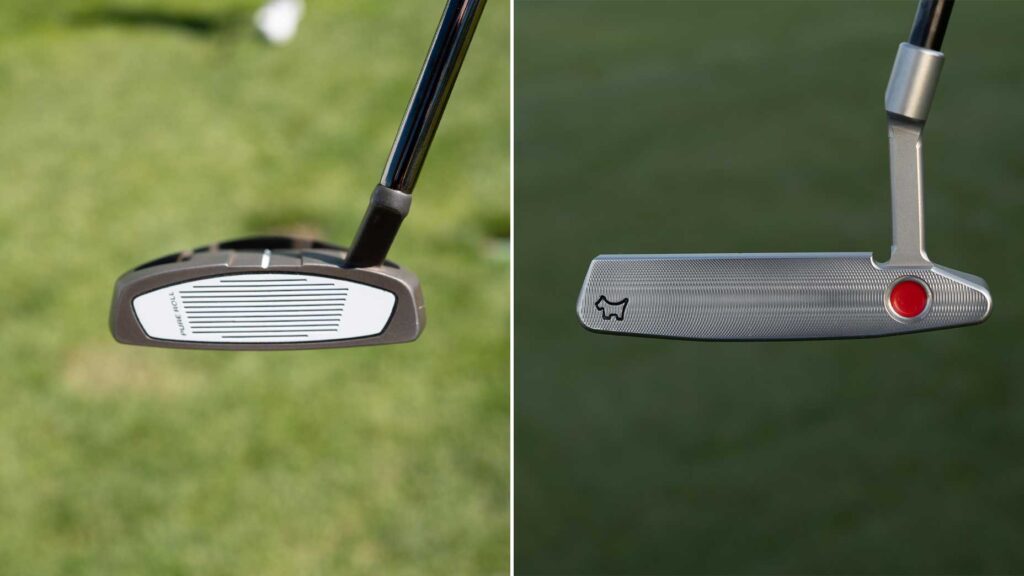Understanding the Differences Between Insert and Milled Putters: Which is Best for Your Game?
When it comes to golf, every club in your bag serves a purpose, but one often overlooked is the putter. A putter’s feel and performance can significantly influence your game. Selecting the right putter involves understanding how its construction materials affect your play. In this article, we’ll delve deep into the distinct types of putters available—insert and milled—and help you discover which is ideal for your golfing needs.
The Importance of Putter Selection
A putter is one of the most critical clubs in your arsenal, yet it often remains underrated. Walking into a golf shop can be overwhelming due to the myriad shapes, sizes, and colors available. However, the most essential feature to pay attention to is the putter face, the only part making contact with the ball. Understanding the various types and constructions can enhance your performance on the greens.
The Basics: Insert vs. Milled Putters
In the world of putters, the primary differentiation lies in their construction: insert putters and milled putters. Insert putters feature a face insert made from a different material than the rest of the head, while milled putters are crafted from a solid block of metal. Some brands even combine these methods, creating milled inserts for a unique feel. Let’s dive into each type to determine which might be best for you.
Exploring Insert Putters: Hybrid Technology
Insert putters typically feature a two-piece construction, using one type of metal for the head and a softer material—like urethane—for the insert. The benefit of using softer materials lies in their ability to provide better feel and feedback upon impact. Many reputable brands harness this technology to enhance the performance and overall gameplay for diverse skill levels.
For instance, brands such as TaylorMade produce high-quality insert putters like the Spider Tour X. These putters not only deliver a softer feel but also allow for better control over ball speed and direction on the green. By incorporating various face materials, these putters can also manipulate weight, thickness, and groove patterns for improved performance.
The Benefits of Insert Technology
One of the main advantages of insert technology is the potential for greater forgiveness and enhanced stability when putting. Manufacturers often strategically place weight within the putter head to optimize its performance. Thus, using lighter inserts enables designers to redistribute weight in a stable manner, improving overall control and balance during your stroke. This feature is particularly beneficial for those who may struggle with consistency on the greens.
Introducing Milled Putters: Precision Engineering
On the other end of the spectrum are milled putters. Crafted from a single block of metal, these putters boast heightened acoustics and a firmer feel compared to inserts. Brands like Ping produce milled putters that excel in providing superior control and touch. The solid construction allows for precise shaping of every surface, resulting in unmatched quality and durability.
For example, the Ping PLD Milled Anser putter is designed with deep milling patterns to enhance feel and consistency. This precision milling guarantees that every putt yields predictable results, making it an ideal choice for skilled players who emphasize touch on the greens.
Milled vs. Insert: Where’s the Value?
While milled putters generally offer a firmer feel and higher price point due to the intricate milling process, insert putters are typically more forgiving and suited for a wide range of golfers. When deciding between the two, consider your playing style and level of expertise. Milled putters require more skill to maximize their potential, whereas insert putters can aid players in achieving better performance with less training.
Testing Your Options: The Importance of Putter Fitting
If you’re unsure about which type of putter suits you best, a fitting session can be invaluable. Golfers can benefit from assessing their performance with both types of putters in real-world conditions. During a fitting, you can analyze factors such as ball speed, direction, and feel, leading to an informed decision about which model will enhance your performance.
Truespec Golf provides extensive fitting options with a wide array of club head and shaft combinations, helping golfers find their perfect match. Testing various putters for distance, control, and general comfort will elevate your game and lead to more consistent putting.
Making Your Final Decision
Ultimately, deciding between an insert and a milled putter boils down to personal preference and your specific needs as a golfer. If you frequently miss the center of the putter face, a softer insert may enhance forgiveness on mishits. Conversely, if you’re seeking to improve your distance control and ball speed, a firmer milled putter may provide that edge.
Consider experimenting with both putter styles, paying attention to how they perform on different green speeds and shot challenges. Balancing feel against performance will help you discover the putter that will bring out the best in your game.
Conclusion: Elevate Your Game with the Right Putter
Choosing the right putter can significantly affect your golfing experience. Both insert and milled putters come with distinct advantages tailored to various playing styles and preferences. Understanding the differences between them, along with your unique needs, will lead to well-informed decisions that ultimately enhance your overall performance on the course.
Invest time in testing various options, seeking out fitting opportunities, and evaluating how each type performs for your game. Elevating your skills is always possible when equipped with the correct tools, and ensuring your putter aligns with your style is a fantastic first step toward better scores on the greens.


